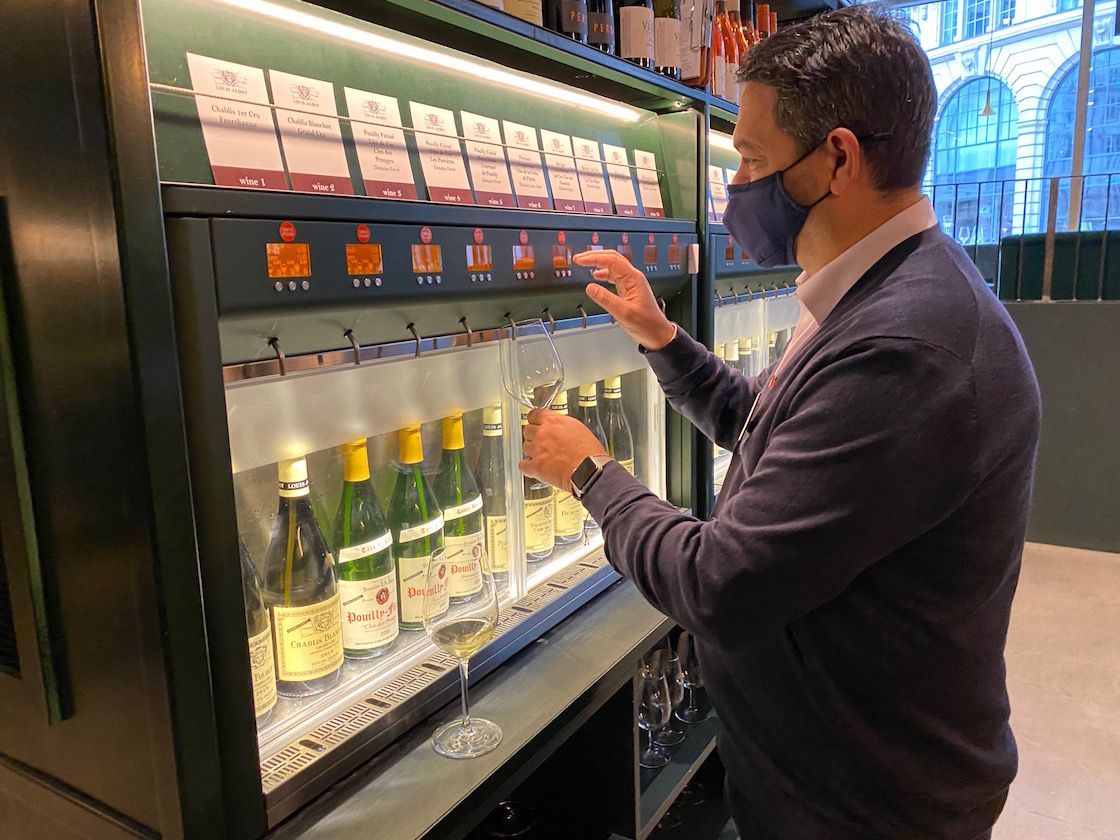“Is there anywhere else I should look for 2019 whites? Certainly. Saint-Romain benefitted from its altitude since many of its vineyards lie between 350m and 400m.” Neal Martin.
Burgundy 2019 is a mouth-watering vintage, make no mistake. The wines, generally speaking, deliver right across the board from the Grand Cru sites down to the lowly Régionale and Village wines. It is neither a ‘white vintage’ nor a ‘red vintage’ but one in which buyers can safely choose right across the board.
But Burgundy 2019 is a vintage where quantities can be an issue. At the first trade portfolio tasting in the flesh – the Louis Jadot tasting in London in November – most of the top wines had already sold out, many at prices few of us could afford.

The Louis Jadot tasting in November 2020 was one of the only physical tastings in the UK for the campaign
2019 was a vintage where many winemakers lost a lot of crop, some as much as 80%, so the prices have inevitably risen. With the £ to € exchange rate not so favourable as it was a year ago, keeping an eye out for keenly-priced Burgundy is more important this year than most.
The good news is that with higher demand and higher prices, winemakers can concentrate on making excellent wine from all of their holdings rather than just concentrate on the best sites.
Another plus is the weather. Although climate change is obviously a global catastrophe, in the short term it means that the wine map is changing – as Burgundy gets warmer and the vintages become more even so the cooler, higher, North-facing slopes of the more humble and less-well known appellations are producing riper, more even wines – a simple Bourgogne white or red can be as generous and balanced as a Village Premier Cru made 30 years ago.
“Village Appellations like Saint-Romain and Saint-Aubin, Maranges and Marsannay, can now be taken far more seriously than they used to, and wines from the Hautes Côtes de Nuits or Hautes Côtes de Beaune can be quite brilliant,” says Sebastian Thomas from Burgundy experts Howard Ripley, “Importantly, there is a depth of quality, from the Régionale and Village wines upwards, 2019 is a vintage to buy at all levels and one which at the top end will go the distance and make for fine old wines.”
In writing about the whites of Burgundy 2019, top critic Neal Martin said: ‘Is there anywhere else I should look for 2019 whites? Certainly. Saint-Romain benefitted from its altitude since many of its vineyards lie between 350m and 400m.’
Add to that Village wines like Monthélie which often gets overlooked in favour of its more famous neighbours Meursault and Volnay, and Auxey-Duresses and Pernand-Vergelesses and you see a pattern emerging – if you want to secure top quality Burgundy 2019 where you don’t have to take out a second mortgage, look for the ‘lesser-known appellations.’
So what are the wines from Burgundy 2019 like?
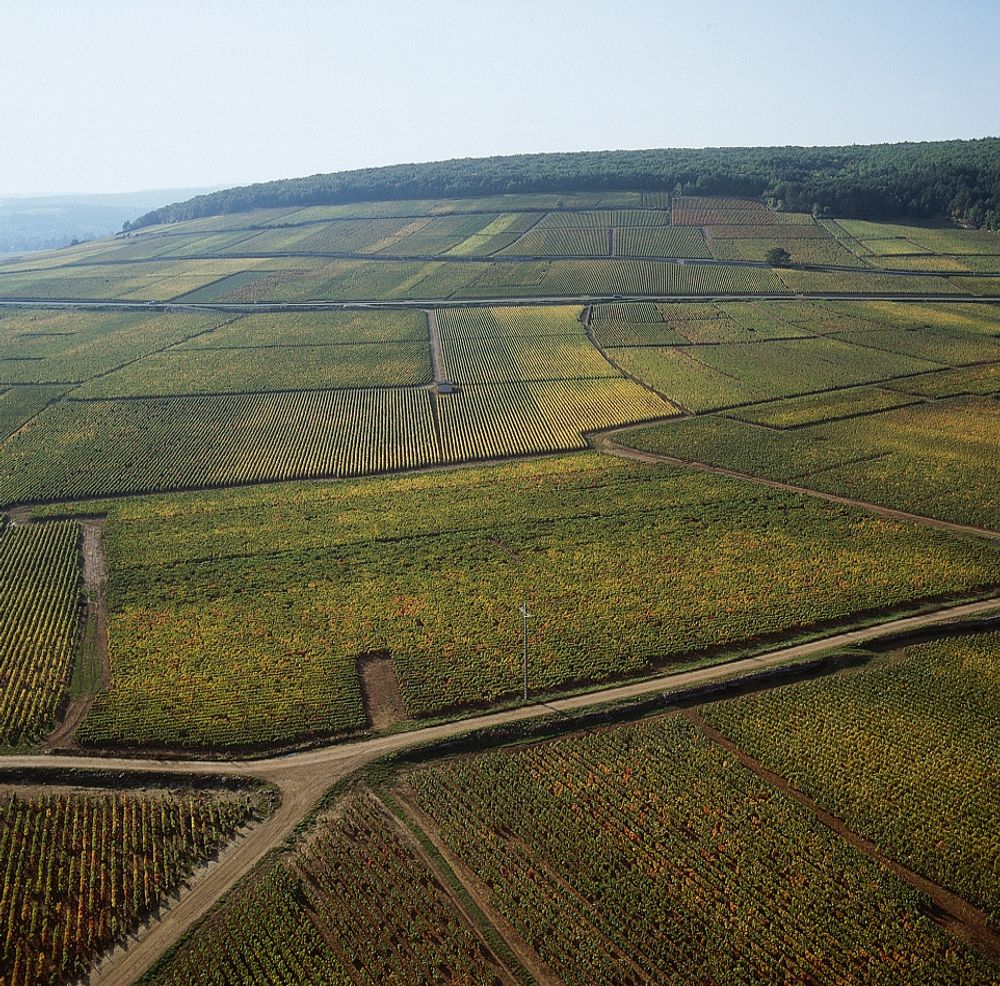
Pernand-Vergelesses Premier Cru, Chanson
The Burgundy 2019 wines are of outstanding quality and have a lovely balance between phenolic ripeness, concentration of flavour and firm acidity. Because the yields are low the wines have substance, extract and tannins but they also have fresh acidity.
The reds are aromatic, have lifted, often pretty notes and have a rich palate (on account of the season’s heat spikes) enlivened by zesty citrus flavours. The whites are textured with notes of ripe, yellow fruit. Although they have high levels of tannin, these are ripe and not without elegance.
In the words of Nicolas Clerc, the Burgundy buyer for Armit Wines: “The reds are truly unique, with huge ageing potential. It is rare to be moved by a vintage so early in its life. The singularity and precision of the wines is genuinely striking. The aromas are focused but meticulous, the freshness is tense and briny, the tannins are firm and delicate. Superb quality is there from the Régionale appellation to the Grands Crus, with the former presenting a genuine steal in terms of drinkability and value for money.”
“The Burgundy 2019 vintage saw the rise of the cooler sites and villages so, if you like your white Burgundy lithe and precise, you might want to orientate your buying towards appellations such as Saint-Romain, Ladoix, Saint-Aubin, Blagny and Savigny-lès-Beaune.”
“In short, for 2019 you can buy the red wines across appellations and price points with absolute confidence, such is the outstanding quality – I have never come across a vintage so pretty and precise.”
Take four whites and take four reds from lesser-known appellations
This year I focused on wines from lesser-known appellations to see where the best value for money lies. Here are four whites and four reds which all hit the mark and, like the Burgundians themselves, we start with tasting the reds before the whites.
THE REDS
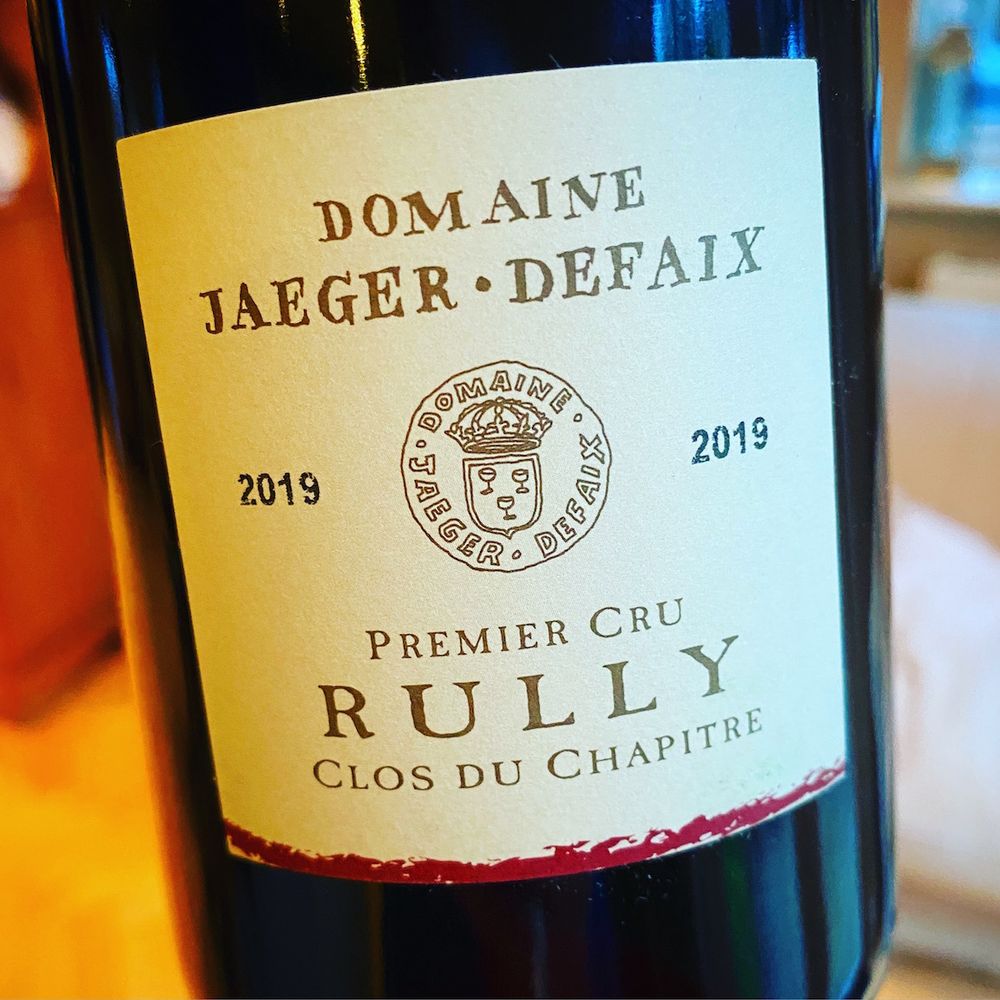
Rully Premier Cru, Clos du Chapître, 2019, Jaeger-Defaix
Rully is located in the Côte Chalonnaise in the south of the Côte de Beaune, where there are 320 hectares of vines, a third of which are red and a third of which are Village Premier Cru, accounted for by 23 Premier Cru Climats, of which Clos du Chapître is one. Winemaker Hélène Jaeger-Defaix took over the vineyards in 2002, her great-grandfather was well known in Rully, helped it obtain its AOC status and to build its fame, the estate also has a range of excellent Chablis.
Pale ruby; quite a shy nose at this early stage of its life – hints of red cherry, black rose petals; medium weight in the mouth, lithe and liquid entry, precise and elegant red fruit flavours, melting tannins already so well integrated, lovely balance between the reasonably firm structure and pretty fruit. Clearly will benefit from some ageing but can just as easily be drunk now. The wine is hugely impressive, an elegant gem which punches way above its weight and price point.
Fixin, 2019, Louis Latour
Fixin is in the North of the Côte de Nuits. It has just shy of 100 hectares, 95% of which are Pinot Noir. Its wines are referred to as ‘Winter wines’ as they tend to need more time in the bottle.
To look at, this wine is deep-mid ruby; the nose is typical Fixin with notes of animal scents, musk and pepper amongst the black cherry and blackcurrant fruit, some peony flowers too; the palate is medium-weight with firm, finely textured tannins, not overly complex in the mouth but fresh and finely registered, with a nicely rounded dry finish. It wouldn’t be right to call Fixin a pretty wine but this is remarkably approachable in its youth. A new wine from the iconic Louis Latour stable which is good and earthy and will be lapped up by those who like their Burgundy nice and rustic.
Savigny-Lès-Beaune Premier Cru, Les Lavières, 2019, Bouchard Père & Fils
Savigny-Lès-Beaune is a village in the wine-making region of Côte de Beaune, that lies between the hills of Corton and Beaune. The appellation has a good deal of history – these vineyards used to be owned by the Dukes of Bourgogne; red vines outnumber whites 10-1, with a third being Village Premier Cru.
Bouchard owns almost 4 hectares of Savigny Premier Cru including this ‘Climat’, so named because of the big flat stones or ‘laves’ in the area.
To look at, the wine is deep cherry red; the nose is an overwhelming bouquet of red and black berry fruit with fresh violets and a hint of cloves; the palate is ample with layers of red and black fruit (morello cherry) and robust but well integrated, chalky tannins. The wine has great presence and length, ripe with a nice spicy kick. Needs a few years to age but the beauty of the fruit and the ripeness of the tannins in the 2019 vintage is there in the mouth. Like this a lot.
Pernand-Vergelesses Premier Cru, Les Vergelesses, 2019, Domaine Chanson
It’s surprising that Pernand-Vergelesses is one of Bourgogne’s lesser-known appellations given that, as a commune, it houses three Grands Crus including Corton-Charlemagne and Corton. It is tucked into the junction of two valleys in the Côte de Beaune wine region and consists of mainly South and East-facing slopes. The wines here are Pinot Noir and Chardonnay roughly 50/50 in quantity. The French also know Pernand for its long cultural history, particularly with the theatre. This red is typical Pernand-Vergelesses, it comes from one (5.4 ha vineyard) of eight Premier Cru sites in the appellation and represents excellent value for money.
To look at, the wine is medium ruby; the nose is intense and pretty at the same time, seductive aromas mingle of blue plum, cranberry, spices and a distinct orange peel note; there’s a lovely fresh entry which becomes more intense and muscular in the mid-palate, which is followed a dry stone-textured finish. The wine takes you on a bit of a journey but it is still focused and has terrific balance that is one of the characteristics of the 2019 vintage.
THE WHITES
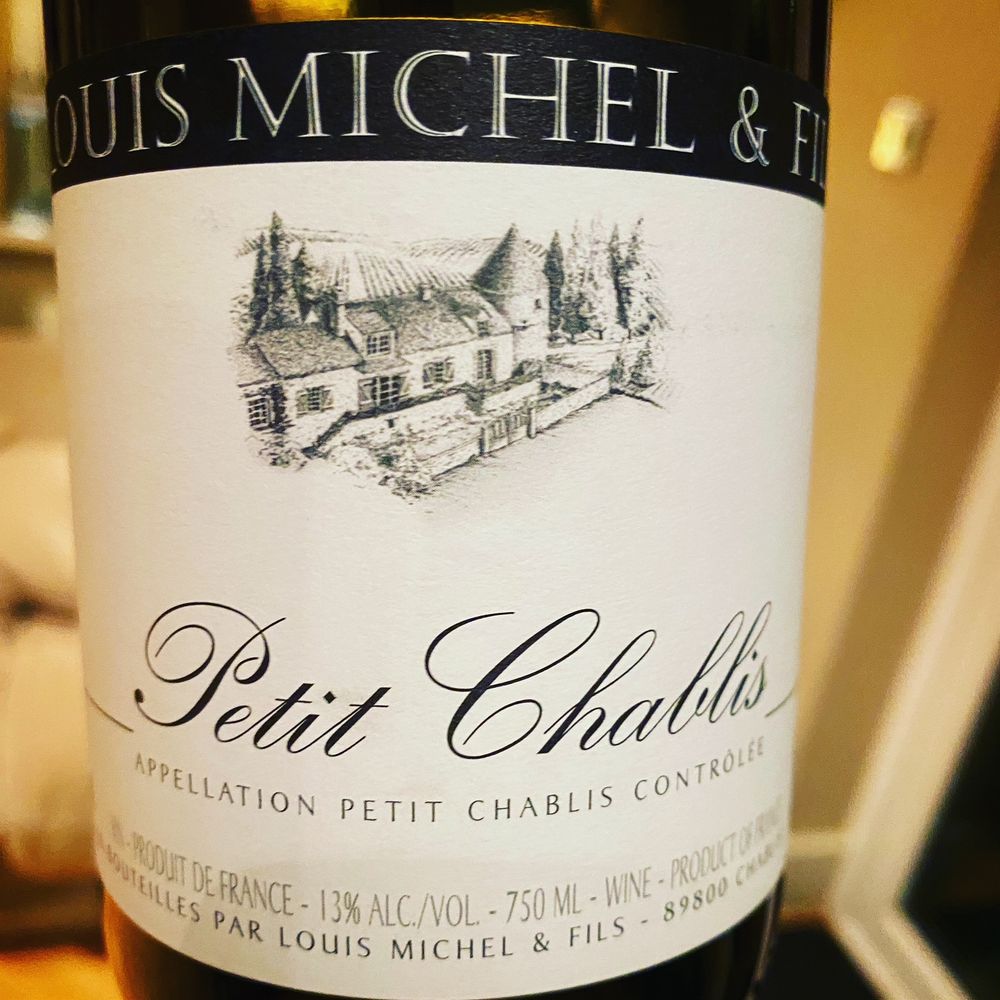
Petit Chablis, 2019, Louis Michel & Fils
Contrary to popular belief Petit Chablis is not ‘lesser’ Chablis, it refers to Chablis that is made from vines planted on the top of the hills and exposed slopes – it therefore tends to be less complex and is best for earlier drinking, and is often amazing value for money. The wines in Chablis in 2019 still have that lovely crushed oystershell, mineral core – many also have an attractive honeysuckle plumpness too.
The Michel family has been making wine in Chablis since the mid-Nineteenth century and makes 13 different Chablis from three Chablis Grand Cru to this entry level Petit Chablis. Michel’s vineyards are planted on very stony limestone-based soils. He likes to use indigenous yeast and vinify and age in stainless steel to keep the distinctiveness of the terroir as much as possible.
To drink, this is pure and clean; on the nose you get notes of lime, flint and oystershell. There is a light mouthfeel with a nice balance between ripe apples, lemon rind, and more punchy citrus – a little lift of grapefruit zest on the mineral, saline finish. Very fresh with refreshing acidity, nice and dry. So approachable and ready to drink now – classic Petit Chablis.
Mâcon-Bussières, Les Clos, 2019, Joseph Drouhin
If you see a Bourgogne or Mâcon wine with an extra ‘geographical denomination’ after it, ie in this case Bussières, that means that it comes from a more specific site than those without, reflecting more of its terroir.
The fruit in this most southerly region always has good ripeness and concentration, especially in a hot summer like 2019. However, because this specific 6 hectare plot close to Pouilly-Fuissé, is located on the elevated Mont de Maconnais there is a lovely freshness and acidity in the wine that keeps good balance, especially with Drouhin having an early-picking ‘house style’. So it has the ample mouthfeel and big flavours that are characteristic of this southerly region of Burgundy, but is not too ‘big’.
To look at, the wine is very light shiny gold; there are notes of white flowers, a bit of rich stone fruit coming in there – white peach – and also quite grapey. Medium weight palate with concentrated fruit flavours, really flavoursome. This is easy-drinking, approachable, luscious fruit with a great backbone of acidity, a mineral quality and a lick of creamy toffee on the finish. The wine has great structure and has a precise, textured edge (coming from the controlled use of 500 litre oak barrels). Loving this
Auxey-Duresses, 2019, Louis Latour
It was in 1924 that the village of Auxey joined with the name of its best parcel of vines ‘Les Duresses’ and became Auxey-Duresses. Three quarters of the appellation’s output are red wines, and its prestigious neighbours Volnay and Pommard totally red, so this white can often be overlooked, which would be a big mistake. It is fresh, nicely structured, elegant and refined and beautifully balanced in this vintage. The wine spends 8-10 months in oak barrels 10% new, medium toasted.
On the eye, the wine is light, shiny yellow-gold; quite a complex and savoury nose, nutty (fresh almonds), a wisp of smoke, a lick of vanilla oak and a touch of gingerbread. Light-medium weight, fresh attack, really textural, grainy mouthfeel, nice precision, freshly-squeezed citrus, little bit of white pepper heat on the finish. It’s a gastronomic white – really great with food.
Beaune du Château Premier Cru, 2019, Bouchard Père & Fils
An exclusive cuvée made since 1907 from four parcels of Beaune Premier Cru, each plot vinified separately. The wine spends 9-10 months in French oak (15% new) and 3-4 months in steel vats.
Savoury and complex, this is a distinctive cuvée not afraid to show its oak. Quite heavy. Pale yellow-gold; notes of guava, nuts, crystalised lemon peel, gingerbread. The palate is medium weight, ripe and rich, quite ample in the mouth, layers of fruit, spice cake and oak (which is dominating the fruit a little), quite buttery on the long finish. This is for those who like their Chardonnay on the big and rich side.
All of the above wines are currently on offer and will be landing in the UK this month, if they haven’t already done so.
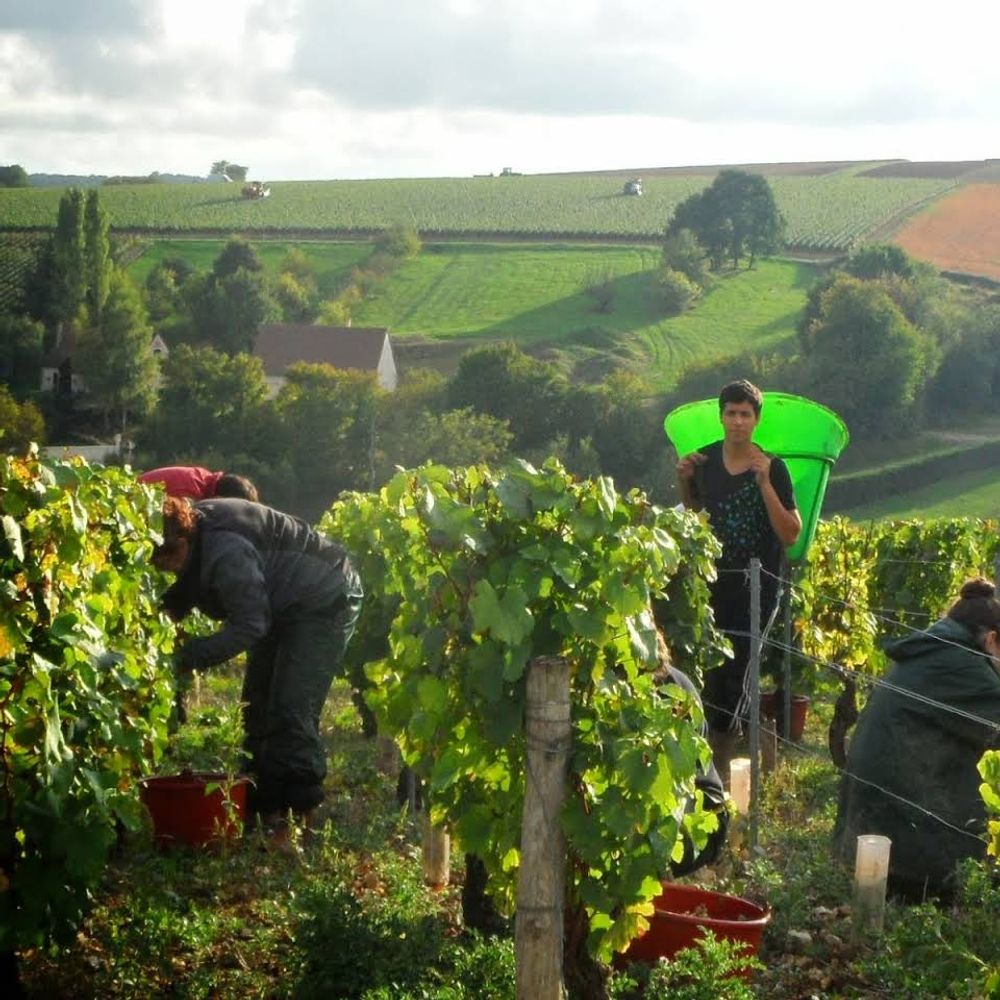
Burgundy 2019 Post script: “Why do they say Bourgogne and not Burgundy?”
This roundup brings to an end The Buyer’s coverage of Bourgogne Week 2021, celebrating the 2019 vintage. Throughout most of our coverage we have used the term Bourgogne rather than Burgundy – but why does the Bourgogne Wine Board (BIVB) insist on using this term? We asked them and this was their reply:
“To re-affirm its identity as one of the most iconic vineyards of France, the region and its producers are reverting back to the original French iteration of its name – Bourgogne. Historically Bourgogne is the only French appellation that adopted an alternate identity for export markets with the use of the ‘Burgundy’ appellation designation for the English-speaking markets, or Burgund for the German speaking and many other translations according to the country. Today, this traditional ‘Bourgogne’ designation has already been adopted by nearly all the wines produced here – either via appellation designation or wine region labeling. By maintaining its true identity, Bourgogne returns to its historical roots as the consummate ‘brand’ treasured by consumers the world over.”
